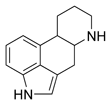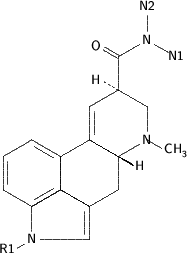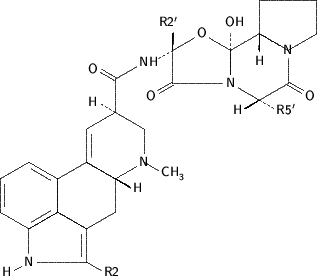Those who remember dihydroergotamine (DHE) may soon see this oncepopular treatment for migraine headaches back on shelves in a new delivery form. In nasal powder form, DHE may exhibit increased speed of onset and duration of action, and absorb more effectively than competing nasal sprays and tablets.
Because DHE was initially available only in a suppository or injectable form, the drug lost its popularity when triptan, another migraine medication, became available in tablet form. Patients liked it better because of its ease of use, and physicians preferred it because it allowed them to avoid needles.
Britannia Pharmaceuticals Limited (Surrey, UK) is working to develop DHE in a nasal powder formulation. DHE was selected because of its long duration of action. "A large number of U.S. physicians would give DHE equal or better quality marks than triptan" says Alex Duckworth, director at Britannia Pharmaceuticals. "One-third of all patients who take triptan may have a reoccurrence when the medication starts to wear off, whereas with DHE, it's only one-in-six, or one-in-seven. The only problem with DHE has always been getting it into the bloodstream."
Britannia collaborated with Novartis to develop the powder treatment. According to Duckworth, Novartis tried to develop a nasal spray form of DHE after triptan became available in an oral form. However, in solution form DHE can he a very unstable molecule. A specific device had to be created that addressed this problem, but because the device was so complicated for patients to assemble, Novartis had trouble selling it once it hit the market.
That's when the idea to create a DHE powder became a goal for Britannia. Tablets may take up to 30-60 minutes to absorb, while powders require only 5-10 minutes or less to start relieving pain. Likewise, nasal sprays have become a popular treatment for migraines because their onset of action is quicker than tablets. However, liquid nasal sprays can release too much liquid into the nasal cavity, which is unable to absorb it all. In this case, the excess liquid drips to the back of the nose, down the throat, and into the stomach. As a result, the liquid must be orally absorbed just as a tablet. "Quite often, liquid nasal sprays have a very similar pharmacokinetic profile to an oral tablet" says Duckrworth. "DHE in powder form can be virtually 100% nasally absorbed, which is how a proper nasal product should be."
The company has been developing the powder product since 2001 and envisions the final version to be packaged in a blister that will sit within the well of a small plastic device. A cone on the upper part of the plastic device includes a bayonet that will pierce the foil of the blister. The medication will then be administered by lightly inserting the cone into one of the nostrils and sniffing.
According to the National Institute of Neurological Disorders and Stroke and the National Headache Foundation, migraine headaches affect nearly 30 million Americans, disturbing 1 in 4 households, causing 157 million missed days of work, and costing American taxpayers $13 billion in reduced productivity each year. Also, migraine headaches have been identified as the most common neurological condition in the world, and it is estimated that as much as 20% of the world's population suffer from them.
"Depending on the progress of clinical trials, we're hoping to have the product on the market in perhaps two years in the UK and three years in the US," says Duckworth.
COPYRIGHT 2003 Advanstar Communications, Inc.
COPYRIGHT 2004 Gale Group




